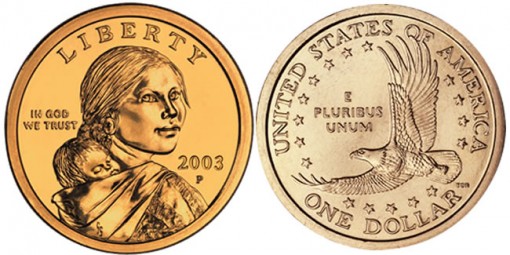The 2000 – 2008 Sacagawea Native American $1 Coins were issued by the US Mint beginning in 2000 to serve as the circulating dollar coin of the United States.
Congress authorized the strikes with the passage of the United States Dollar Coin Act of 1997 which was signed into law by President Bill Clinton in December of that year. The theory behind the strikes was that they would eventually replace the dollar bill for use in everyday commerce and save the country money. The useful life of a dollar bill is only measured in months versus a coin which lasts for years.
To that end, the authorizing legislation required the new strikes to be "golden in color, have a distinctive edge, (and) have tactile and visual features that make the denomination of the coin readily discernible." This was meant as a response to the previous dollar coins known as the Susan B. Anthony Dollars which were unpopular with the public owing to its size and color similar to that of the quarter.
However, public interest in the new strikes was also negligible and many preferred to still use the dollar bill instead of the new coin. Consequently, the Mint stopped producing the Sacagawea $1 Coins for circulation after 2001 and the following year’s only saw their production for numismatic interests.
Left to the discretion of the Treasury Secretary (in consultation with Congress), the design of the coin was decided by an advisory committee created by the Secretary with the main instructions being that a design showcasing one or more women be chosen. Their selection was that of Sacagawea, the famous Shoshone woman who accompanied the Lewis and Clark Expedition as a guide.
A portrait of Sacagawea is shown on the obverse of the coin designed by Glenna Goodacre. The reverse showed a soaring eagle as designed by Thomas D. Rogers.

